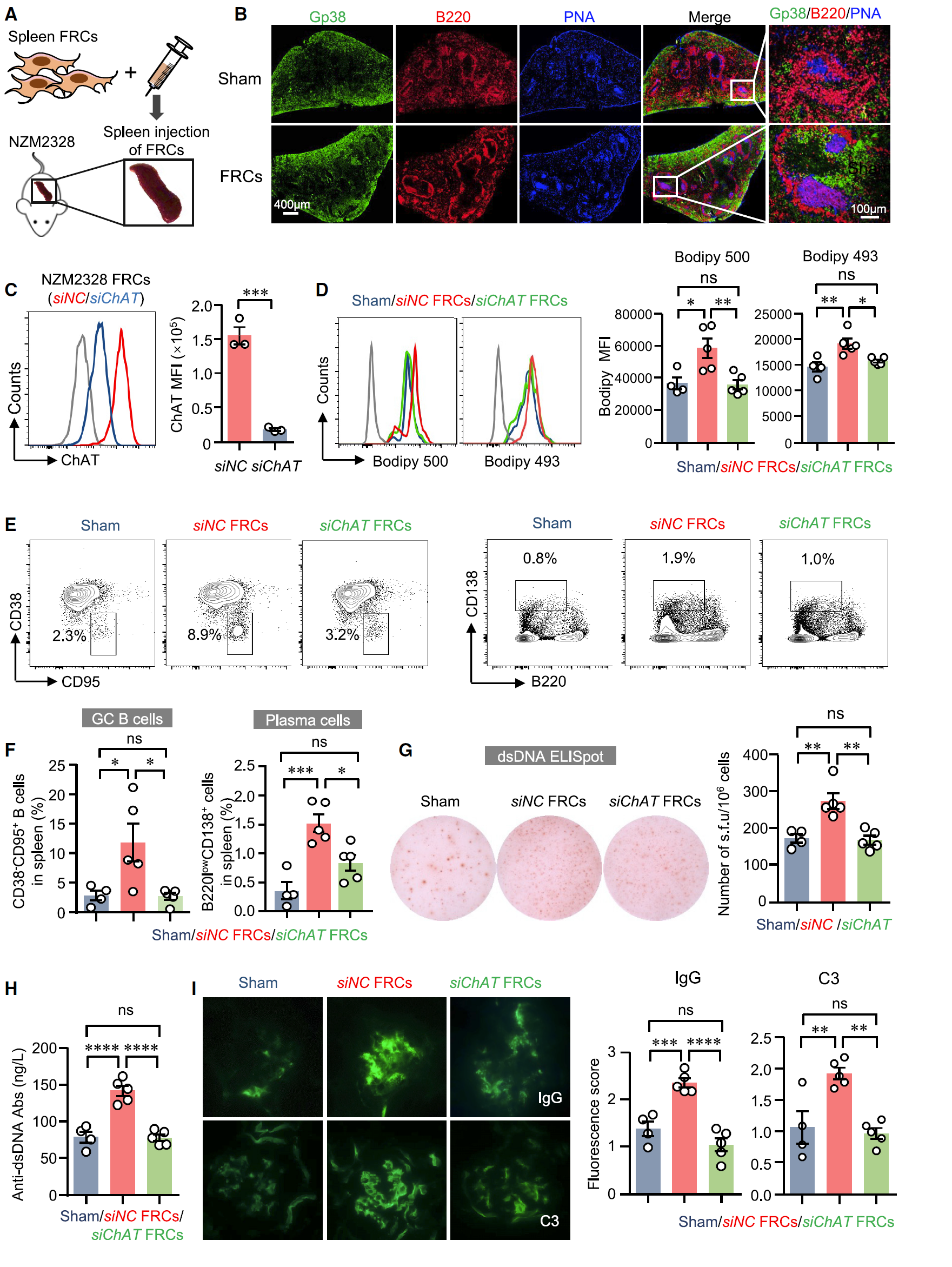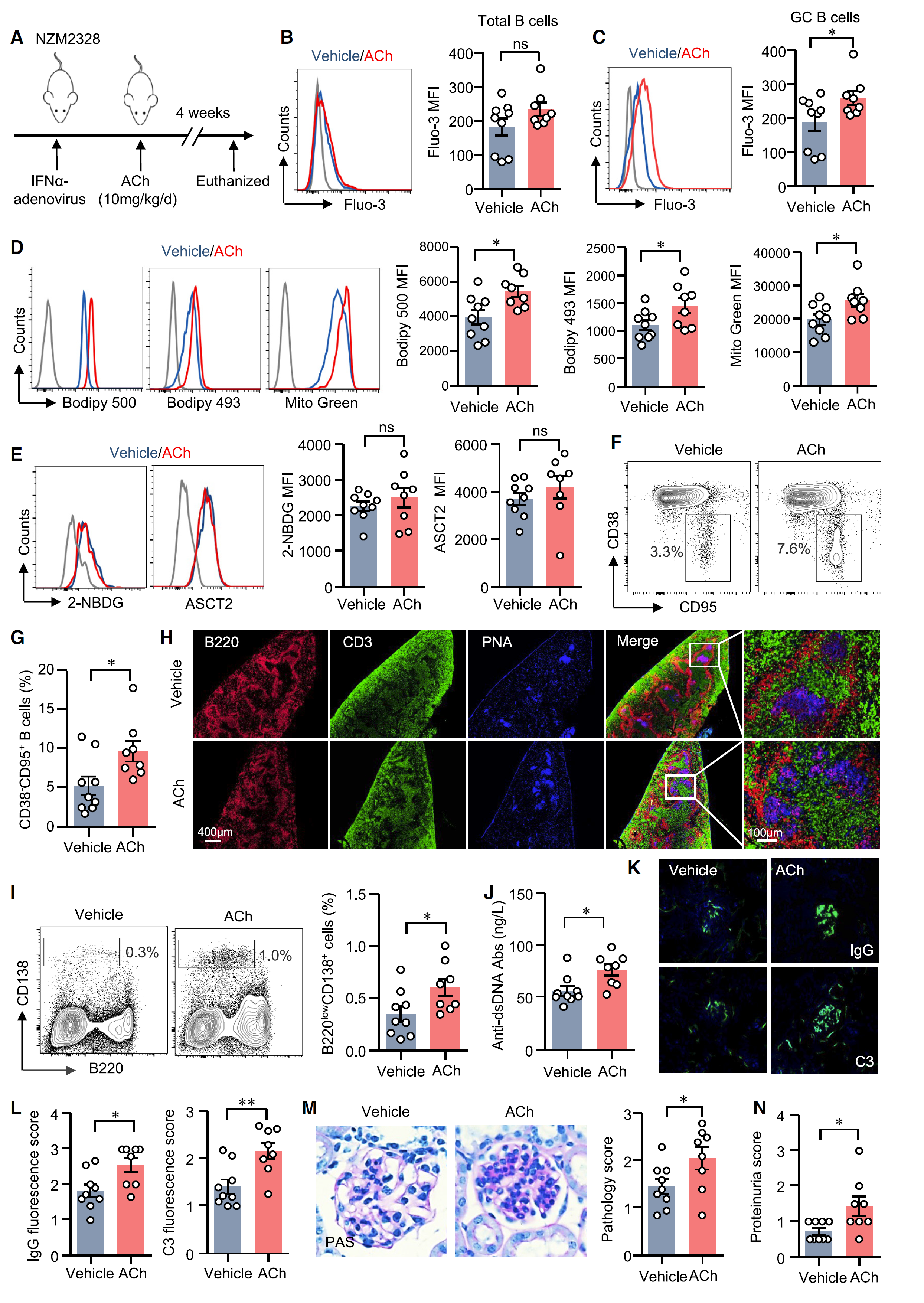Systemic lupus erythematosus (SLE) is an autoimmune disease characterized by multiple autoantibodies and involvement of multiple systems. The occurrence of SLE is due to the body's loss of tolerance to self antigens, leading to the production of self reactive B cells. These autoantibodies secreted by B cells form immune complexes with self antigens, causing inflammation and tissue damage, ultimately leading to organ dysfunction. The most common complication of SLE is lupus nephritis mediated by immune complexes. At present, treatment strategies targeting B cells have shown some effectiveness in SLE patients, but are limited by the resistance of B cells or plasma cells secreting antibodies to elimination therapy. Therefore, the signaling mechanisms underlying the differentiation and maintenance of self reactive B cells in SLE are still unclear.

On April 4, 2023, the team led by Professor Zhang Hui and Professor Yang Niansheng from the First Affiliated Hospital of Sun Yat sen University published a research paper titled "Spline Fibroplastic Retinal Cell derived Acetylcholine Promotes Lipid Metabolism to Drive Autoreactive B Cell Responses" in Cell Metabolism.
The article studied the role of splenic reticular fibroblasts in the immune response of self reactive B cells in systemic lupus erythematosus (SLE). Research has found that acetylcholine secreted by splenic reticular fibroblasts can promote lipid uptake in B cells through CD36 receptors, thereby enhancing mitochondrial oxidative phosphorylation and improving energy production and differentiation ability of B cells.
It has been demonstrated that inhibiting fatty acid oxidation or knocking out CD36 receptors in B cells can reduce the production of self reactive B cells and the secretion of autoantibodies, thereby improving the condition of SLE mice. This article reveals a new mechanism by which splenic reticular fibroblasts regulate B cell differentiation through acetylcholine mediated lipid metabolism, providing new clues for the pathogenesis and therapeutic targets of SLE.
Experimental part
The germinal center of the spleen is a structure that briefly forms within the B cell region (follicle) of secondary lymphoid organs, where mature B cells are activated, proliferated, differentiated, and mutated in their antibody genes. The germinal center is composed of various cells, including B cells, T helper cells, and macrophages. Due to the complex cellular composition of the splenic germinal center and the diverse morphological structures of its slices, in situ studies, the precise definition of its boundaries through software algorithms is the basis for quantitative research on the size and quantity of germinal centers.
This article uses the TissueFAXS Spectra panoramic multispectral tissue scanning quantitative analysis system from TissueGenomics to collect multi-color fluorescence images of spleen tissue samples. And using multiple immunofluorescence techniques, a large amount of tissue morphology information was obtained through AI Classifier technology. Combined with the precise aggregation single-cell recognition technology in Tissue Cytometry, the contour of the splenic germinal center was accurately identified by defining the density relationship between multiple cells, and the value-added and differentiation levels of the germinal center were accurately quantified under the influence of FRCs and their secreted acetylcholine.
Panel information: B220 mouse B cells, CD3 T cells, GP38 lymphatic endothelial cells, PNA lymphocyte maturity
Spleen fibroreticular cells (FRCs) promote autoreactive B cells in NZM2328 mice through cholinergic signaling.
In order to further investigate the role of FRC derived acetylcholine (Ach) in systemic lupus erythematosus, FRCs were injected intraperitoneally into NZM2328 mice (Figure 1A). Multiple staining fluorescent samples showed that FRCs can enhance the germinal center (GC) response, increase the number and size of GCs, promote B cell differentiation, and produce anti double stranded DNA antibodies.

Fig 1 Fibroblast reticular cells promote self reactive B cells in NZM2328 mice through acetylcholine
B:MIF image of mouse spleen tissue (Gp38, green; B220, red PNA, Blue).
ACh enhances lipid metabolism and self reactive B cell response in NZM2328 mice
ACh was injected into the spleen of NZM2328 lupus mice, and it was found that ACh can increase the calcium ion levels, lipid uptake and metabolism, mitochondrial quantity, and oxygen consumption rate of germinal center (GC) B cells, thereby promoting the differentiation of GC B cells and plasma cells (PCs). And it was found that ACh can increase the production of anti double stranded DNA antibodies, leading to the deposition of glomerular immune complexes, renal pathological damage, and proteinuria.

Fig 2 Acetylcholine promotes fatty acid metabolism and self reactive B cells in NZM2328 mice
(H)MIF staining images of B220, CD3, and PNA in spleen tissue.